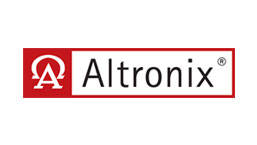Richmond, VA’s Bill Hobgood is Recipient of Inaugural CSAA Public Sector Award
Public Safety Project Manager Recognized for Tireless Work on Behalf of the ASAP® Program
VIENNA, VA (June 18, 2015) – CSAA International announced that Bill Hobgood, Project Manager, Public Safety Team in the Department of Information Technology for the City of Richmond, Virginia, is the recipient of CSAA’s inaugural Public Sector Award. This special honor is given by CSAA in recognition of a public sector individual’s contribution to the alarm industry.
“Over the past several years, Bill has worked tirelessly to promote and implement ASAP®, a program that increases the efficiency and reliability of emergency electronic signals from central station alarm companies to Public Service Answering Points (PSAPs),” said CSAA President Pamela J. Petrow. “Bill is the ideal recipient of this inaugural award–he has been an indefatigable advocate for the ASAP program, which benefits both the private and public sector.”
“I am deeply honored to receive CSAA’s Inaugural Public Sector Award,” said Hobgood. “Having personally developed the first ASAP to Computer-Aided Dispatch interface for York County, VA and the City of Richmond, VA that was launched in 2006 as a two-and-a-half year pilot, I realized from day one that the ASAP program would become the win-win that it has for public safety and the alarm industry with the primary beneficiary being the community that we serve. The ASAP program has a proven track record of successes across the United States made possible due to faster responses by public safety responders.”
Hobgood was nominated for the award by Vector Security and by CSAA Past President Louis T. Fiore. “This award is so well-deserved!” said Fiore. “Bill has done a great deal for CSAA, ASAP and the industry as a whole, and I congratulate him on this recognition.”
ASAP was launched in 2011 as an initiative by the alarm industry in a cooperative effort between the Association of Public Communications Officials (APCO) and CSAA. With ASAP, critical life safety signals and accurate information is processed in seconds, not minutes, through the Nlets system of state-to-state PSAP communication, insuring that critical time is not lost, and that complete and accurate information is transmitted to the PSAP every time. The ASAP program also helps reduce false alarms, and may save the PSAPs and emergency services potentially millions of dollars.
“ASAP is a critical initiative that will improve public safety,” said Petrow, “and it is being implemented all around the country thanks to Bill.”
“The program continues to expand to additional Public Safety Answering Points and alarm central stations at a rapid pace,” Hobgood said. “It has been personally rewarding each time I learn of another PSAP or central station that has joined the program. This program really works and I am thankful to be part of it.”
Hobgood’s efforts to promote and implement ASAP include:
- Assuming the role of technical lead for the original pilot in 2006 and achieved the first Computer-Aided Dispatch (CAD) interface
- Serving as Co-Project Manager for APCO with the IJIS Institute on the Public Safety Data Interoperability Program that led to the development of the IEPD for the ASAP program
- Serving as Chair of APCO’s Data Transfer Committee that led to the program becoming an American National Standard
- Promoting the ASAP program to many groups in at least 40 presentations including:
- APCO International annual conferences
- Local and regional APCO/NENA chapter conferences
- Justice Clearinghouse webinars
- CAD provider user groups
- Best of NIEM webinars
- IJIS Institute Symposiums and Briefings
- ASIS Security conferences
- International Association of Chiefs of Police (IACP) conferences
- Law Enforcement Information Management (LEIM) conferences
- Working with each central station that participates in the ASAP program to certify their automation with the City of Richmond CAD system in conforming to the ANSI standard
- Working with many of the PSAPs that are operational today with the ASAP program including:
- City of Richmond, VA
- York-Williamsburg-Poquoson, VA
- James City County, VA
- Washington, DC
- Houston, TX
- Henrico County, VA
- As subject-matter-expert on the ASAP program, answering technical questions from PSAPs and central stations, reaching out to PSAPs for feedback and follow up, and participating in monthly ASAP committee conference calls to keep CSAA informed
Hobgood will be presented with the award at the Electronic Security Expo (ESX) Public Sector luncheon on Wednesday, June 24, at the Baltimore Convention Center. For more information, contact Elizabeth Lasko at CSAA, 703-242-4670 or ewlasko@csaaintl.org.
About CSAA International
The Central Station Alarm Association International (CSAA) is an internationally-recognized non-profit trade association that represents professional monitoring companies that are listed by a CSAA-approved Nationally Recognized Testing Laboratory, such as FM Global, Intertek/ETL or UL. CSAA is legally entitled to represent its members before Congress and regulatory agencies on the local, state and federal levels, and other authorities having jurisdiction (AHJs) over the industry. Since its incorporation in 1950, CSAA has served its members’ interests through education, online training, meetings and conventions, certification, insurance, and industry standards. www.csaaintl.org. For more information, contact Elizabeth Lasko at CSAA, 703-242-4670 x 16.
###









